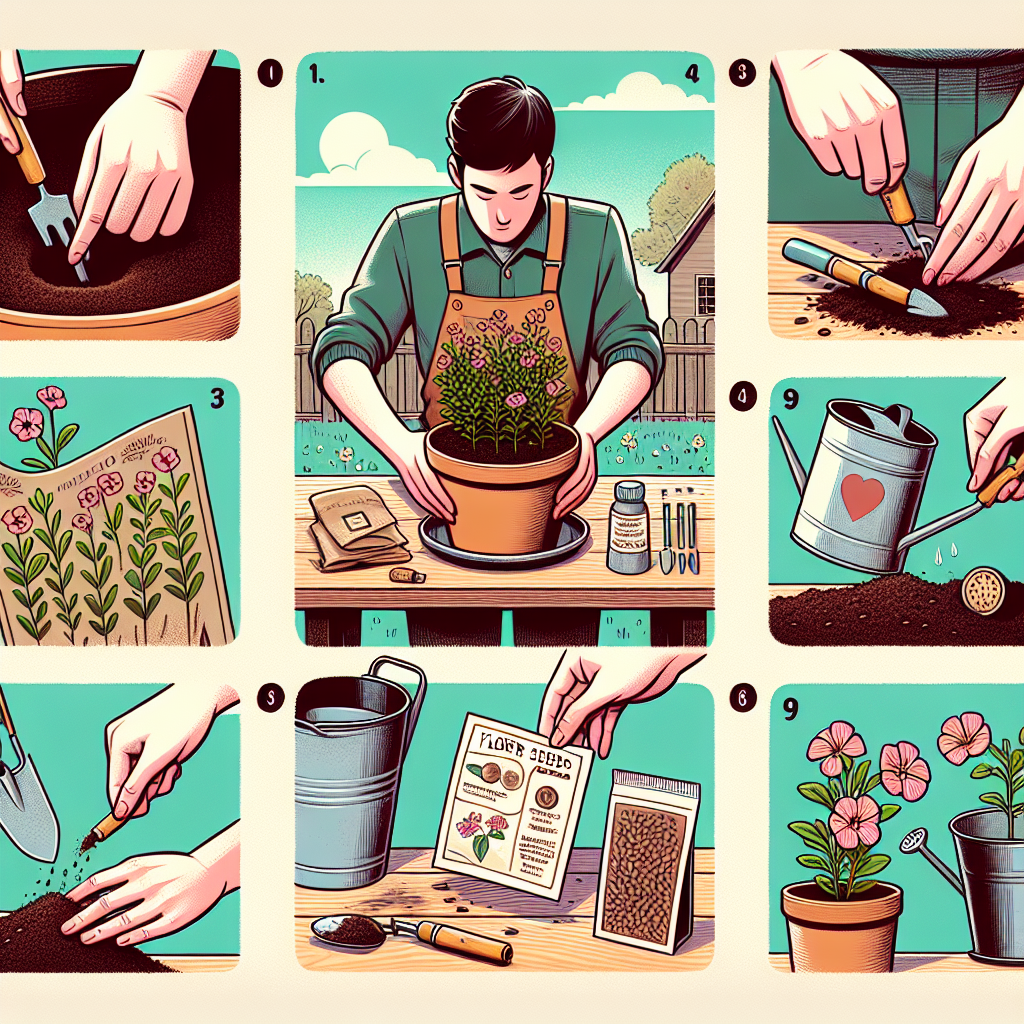
How to plant flower seeds in a pot
How to Plant Flower Seeds in a Pot: A Comprehensive Guide
Gardening is a rewarding hobby that can bring joy, tranquility, and a sense of accomplishment. One of the most satisfying aspects of gardening is growing your own flowers from seeds. Whether you're a seasoned gardener or a novice, learning how to plant flower seeds in a pot can enhance your gardening experience. In this article, we'll explore the steps involved, the best practices, and essential care for your flowering plants.
Why Plant Seeds in Pots?
Planting seeds in pots comes with several benefits:
- Space Efficiency: Ideal for urban settings where garden space is limited.
- Control Over Soil Conditions: Allows you to customize the soil quality for your specific needs.
- Ease of Mobility: Potted plants can be moved to find optimal sunlight or shelter from harsh weather.
- Disease Prevention: Reduces the risk of soil-borne diseases that are more prevalent in garden beds.
Choosing the Right Pots
Before diving into the planting process, selecting the right pots is essential. Here are some factors to consider:
- Material: Choose from plastic, terra cotta, or ceramic pots. Each has its benefits, such as weight, drainage, and heat retention.
- Size: Ensure the pot is large enough for the flower species you are planting. Generally, a depth of at least 6 inches is recommended for most flowers.
- Drainage: Ensure your pots have adequate drainage holes to prevent waterlogging, which can harm the seeds.
Gathering Your Supplies
To successfully plant flower seeds in a pot, gather the following supplies:
- Flower seeds
- Seed-starting soil or potting mix
- Plant labels (optional)
- Watering can or spray bottle
- Plastic wrap or a plastic dome (to create humidity)
- Fertilizer (optional, depending on seed type)
Steps for Planting Flower Seeds in a Pot
Now, let’s get into the detailed process of planting flower seeds:
- Prepare the Pot: Fill your clean pot with seed-starting soil, leaving about an inch from the top. Gently press down to eliminate air pockets.
- Sow the Seeds: Check the seed packet for specific planting instructions. Generally, you’ll want to plant seeds at a depth of about two times their diameter. Scatter seeds evenly over the soil surface.
- Cover with Soil: Lightly cover the seeds with the appropriate amount of soil, as per the instructions on the seed packet. Be careful not to compact the soil too tightly.
- Watering: Moisten the soil using a watering can or spray bottle. It's important to avoid over-saturating; the soil should be damp, not soggy.
- Create a Humid Environment: To promote germination, cover the pot with plastic wrap or a plastic dome. This traps moisture and warmth, creating a greenhouse effect.
- Place in a Suitable Location: Set the pot in a warm, well-lit area. Most flower seeds germinate best at temperatures between 65°F and 75°F (18°C to 24°C).
- Ventilation: Once you see seedlings emerging, remove the plastic cover to allow for air circulation and prevent mold growth.
Monitoring Growth and Caring for Seedlings
As your seeds begin to sprout, proper care is crucial for healthy growth:
- Light: Ensure your seedlings get plenty of bright sunlight; a south-facing window is ideal. If natural light is insufficient, consider using grow lights.
- Watering: Water the seedlings consistently, but avoid overwatering. Check the top inch of the soil; it should feel moist but not wet.
- Thinning: Once your seedlings have developed two sets of true leaves, thin them out by snipping off the weaker ones. This gives the stronger plants room to grow.
- Fertilizing: You may start fertilizing your seedlings with a diluted liquid fertilizer once they have established a few true leaves.
Transplanting Your Flower Seedlings
Once your seedlings have grown strong enough and the risk of frost has passed, it's time to transplant them into larger pots or your garden:
- Timing: Typically, this occurs 4-8 weeks after germination.
- Preparing the New Pot: Choose a pot with drainage holes and fill it with appropriate potting soil.
- Transplant Carefully: Use a fork or your fingers to gently remove the seedling from its original pot, being careful not to damage the roots.
- Water After Transplanting: Water your transplanted seedlings well to help them settle into their new environment.
Common Mistakes to Avoid
Here are some common pitfalls when planting flower seeds in pots:
- Overwatering: One of the most common mistakes is watering too much. Ensure pots have proper drainage.
- Insufficient Light: Without adequate sunlight or artificial grow lights, seedlings may become leggy and weak.
- Ignoring Seed Packet Instructions: Different seeds have unique requirements for depth, spacing, and germination temperature.
- Neglecting to Thin: Failing to thin seedlings can lead to overcrowding and stunted growth.
Final Tips for Successful Flower Gardening
To conclude, mastering how to plant flower seeds in a pot can elevate your gardening skills. Remember these final tips for success:
- Always start with quality seeds to ensure the best results.
- Label your pots to keep track of different flower varieties.
- Keep an eye out for pests and diseases, and take action promptly if issues arise.
- Have patience! Many flowers take time to bloom but are well worth the wait.
Conclusion
Whether you're looking to brighten up your home, create a beautiful garden space, or simply enjoy the art of gardening, planting flower seeds in pots is a fantastic way to start. With the right preparation, care, and maintenance, you'll be rewarded with a stunning display of flowers in due time. Happy planting!
By Guest, Published on October 17th, 2024